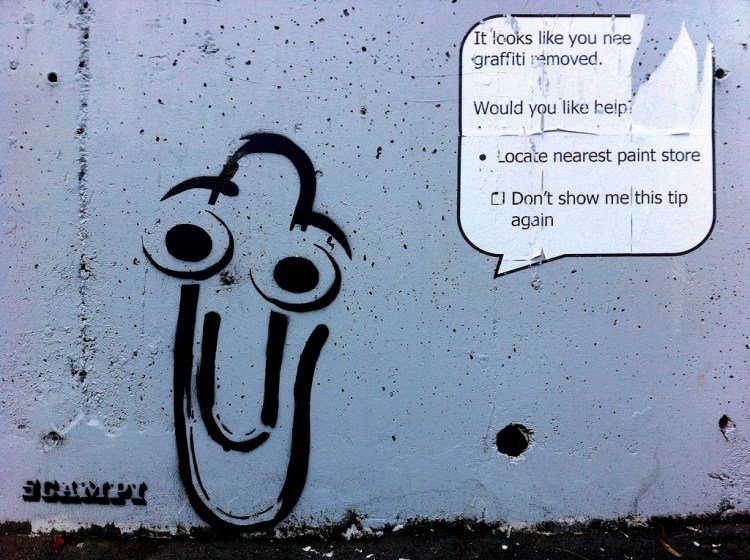If you’ve ordered a pair of pants via bot on Facebook Messenger, or “read” the news for more than a few minutes on the Quartz app (and don’t get me wrong, Quartz — your content is unparalleled), you know virtual conversations can be even more tedious than your seatmate on the redeye who just can’t stop talking.
As painful as many of these early chatbots are, the singular ability of messaging to simplify and focus your interactions with both people and intelligent systems is too powerful to be anything but inevitable. In much of the world outside the U.S., it’s a done deal (see WeChat).
So where have many early approaches gone wrong? Simple: They assume people like conversation for its own sake, and in the process, take historically simple tasks and make them several times more complicated.
Old: Type “khakis” into search bar. Click on second image in your Google results if you’re a Dockers fan (my apologies, hipsters)
New: Open Facebook Messenger. Find online clothing bot channel. Start chat.
“Men’s or Women’s?”
“Clothes, Shoes, or Accessories?”
“Tops or Bottoms?”
“Shorts, Pants, or Jeans?”
Get five sample pairs of pants, none of them khakis. Exit app with audible sigh. Type “khakis” into search bar…
Hopefully, these sorts of early experiences won’t turn users off so much that they stay away from conversational interfaces that truly harness the power of the medium.
Because that power is truly remarkable, showing “less is more” in a way that few other interface revolutions have. Especially as we start to move from consumer applications to enterprise use cases (thanks Nir Eyal and team for the thought leadership on this topic).
This is not your parent’s Clippy.
Conversations rise above the noise
The marriage of conversations with intelligent notifications is the most promising path yet to managing information overload. It’s a format ideally suited to curation: email is too noisy, apps are too passive.
An intelligent cloud service (a bot) can sift through everything important to you and surface just the right nuggets at the right time to be both valuable and actionable. Rather than being a time sink (love wading through your email inbox after vacation, anyone?), bots can accelerate “getting things done.” And conversations let them do through a medium that’s far more intuitive to users than previous attempts (RIP Google Now).
Caution is needed here, however. The very popularity of Slack and similar products that are at the forefront of the conversational trend can lead to user fatigue if they lack intelligent curation functionality to prevent their information streams from becoming a flood.
Conversations enable “machine-assisted actions”
Before intelligent messaging, accessing information and conversing about it were two different things. Sure, Facebook and derivative interfaces supported liking and simple dialogs around status updates, but the current revolution marries conversations with powerful machine learning and data science. The result is conversations and decisions prompted by new insights.
Take a critical business process like performance evaluation. Historically, this has been a tedious process where managers must remember a year’s worth of employee activity in an attempt to generate a constructive set of feedback and recommendations for improvement. Even companies who sell HR software are ditching them. With a messaging-based interface powered by machine intelligence, a simple mobile app can automatically prompt managers and/or coworkers to provide feedback on an ongoing basis and intelligently route that feedback to employees to drive immediate action and course-correction (see companies like 15Five). Messaging plus A.I. promises to both simplify and improve countless business processes in this way.
Context is king
The best conversational interfaces dynamically create and destroy messaging “contexts” to combat information overload.
Any Snapchat user understands the incredible power of ephemerality (hint: it doesn’t really have anything to do with sexting). Again, consider your inbox: it will grow forever if you don’t maintain it. The beauty of ephemeral conversations is the user expectation that they are actively throttled and managed to surface only what’s relevant. Didn’t look at your friend’s story within 24 hours? It’s gone, because it’s old news (especially if you’re a teenager).
Enterprises can learn a ton from this consumer trend. As companies gain the ability to control and manage what gets their employees’ attention at any given time based on the company’s strategic priorities, the result will be transformative. Combined with notifications and real-time communication, this intelligent curation will dramatically improve worker productivity not just by making things easier, but by helping people maintain focus in a world of ever-increasing distractions.
Look at what companies like Crew are doing to change the way highly “tech-underserved” segments of the economy work by leveraging this concept. On-the-go workers like restaurant employees can easily manage their shift schedules and get critical, timely information without having to get email addresses and constantly manage their inboxes. Uber, while not a conversational interface, can largely thank the power of context and ephemerality for its success, since those concepts are what make it frictionless for drivers and riders to see in real-time the availability of transportation in a given geographic area.
Conversations are not a panacea. There is a complexity “tipping point” beyond which a messaging-based interface makes life more difficult — essentially, when a long conversation is required to accomplish the task. This can be due to the specificity of what you’re looking for/trying to do (like buying khakis) or the iterative nature of the process (like booking a flight). If it’s something that is frustrating doing over the phone with a customer service rep, it’s probably going to be frustrating doing it with a bot.
Still, it’s early days. With such great promise and so much interest and brainpower focused on the challenge, the way humans interact with machines will be profoundly impacted by this new, digital art of conversation in ways that no one would have anticipated just a couple of years ago.


